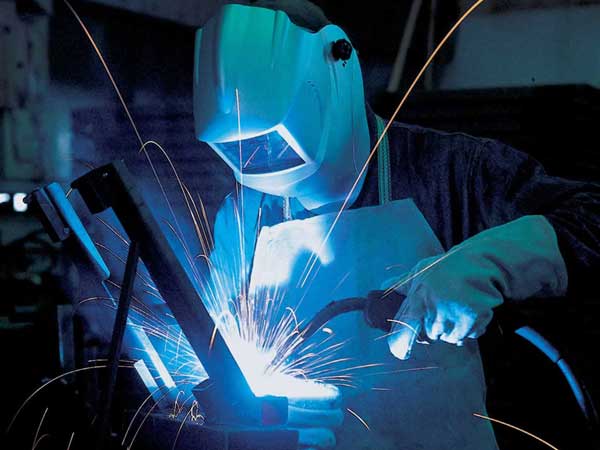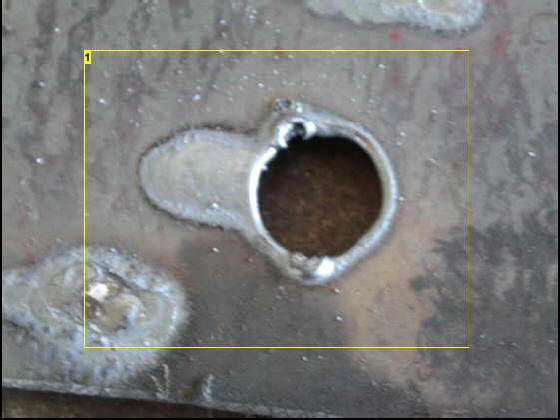What is MIG welding used for?
If you are a seasoned professional MIG welder, you’ll know the answer to the question, ‘What is MIG welding used for?’ You’ve probably been asked that same question more times than you care to recall. But for newcomers to welding, or those about to transition to MIG welding from oxyfuel or stick welding, here’s a quick overview of what makes MIG welding so versatile and where it comes into its own.
Firstly, here’s a (very) brief summary of the technology behind MIG welding. For more information, head over to our dedicated ‘What is MIG Welding?’ page.

How does MIG welding work?
MIG welding (metal inert gas welding) is one of several welding processes that use electricity to melt and join pieces of metal. MIG welding uses lots of electricity to create an electrical arc between an electrode wire and the metal being welded. The arc melts the wire, which is then deposited to create the weld. When the heat is removed, the weld pool cools, solidifies and form a new piece of fused metal – the weld is complete. All this happens at the nozzle of a MIG torch, a hand-held device not unlike a fuel-filler nozzle that simultaneously feeds electrode wire and inert shielding gas to the weld.
What MIG is better for?
MIG welding (and the new generation of affordable MIG welding equipment) is best suited to smaller, relatively lower-volume work, mainly manual welding that takes place in and around factories and metal working workshops where the vulnerability of MIG to draughts is less of an issue.
When you are fabricating small structures or repairing customers’ cars, speed, weld quality and high productivity are the keys. And that’s where MIG comes into its own. Similarly, for hobby-welders working on weekend projects in garage or garden shed, or novice welders who need good welding capability without the steeper learning curve of TIG or traditional (and cumbersome) oxyfuel welding.
Throw in MIG welding’s renowned cleanliness, long-pass capability, applicability to metals and alloys as diverse as mild steel, stainless steel, aluminium and magnesium, and it’s easy to see why this welding process has become the darling of small and medium-sized industry from California, to Gloucestershire, UK.
Where MIG isn’t so good?
No welding technique is perfect for all welding applications, and MIG is no exception. The classic exemplar of MIG’s disadvantages would be an agricultural or construction application where welding has to take place on-site, in the middle of an exposed field, where the wind is blowing. True, windshields can make things a bit easier, but generally, MIG welding is better suited to the more controlled environment of an enclosed factory or welding shop.
MIG welding disadvantages
For a full discussion about the pros and cons of MIG welding, see our blog article on ‘MIG welding Advantages and Disadvantages’. For now, here’s a summary of the characteristics that are usually held up as MIG disadvantages:
- MIG welding set up costs
- Maintenance
- Wind problems
- Portability
- Weird positions
- Burn through

What is better TIG or MIG welding?
This is the $64,000 question among electric arc welders and those who rely on their skills. Both MIG and TIG (tungsten inert gas) welding are powerful, versatile, tools that have been refined, since the 1940s, to their current advanced capability.
The major difference between MIG and TIG is that MIG welding uses a continuously-fed electrode wire that emerges from a MIG handset, while TIG welding combines the non-consumable tungsten electrode in the TIG torch with a hand-held, consumable, welding rod. The TIG welding rod is held in the welder’s other hand and carefully fed into the weld puddle. Welding power for the TIG process is usually controlled by a foot pedal. Imagine that childhood game of rubbing your tummy while patting the top of your head. Okay, now try tapping your left foot at the same time…
Advantages of MIG over TIG welding?
From the description above, you probably get a feel for the complexity of TIG welding, and the skills required to master it. It’s what underpins many of the differences between the two processes. So what are the main differences between MIG and TIG?
- All things being equal, MIG is easier to learn.
- MIG is generally faster.
- It’s good for larger jobs that need long-pass welds.
- MIG is often more effective with thicker metals.
- MIG welders often cost less than TIG welders.
- MIG is arguably more accurate. The continuous nature of MIG welding reduces the possibility of flawed welds.
- MIG welding is better for longer production runs.
- MIG welds tend to be cleaner, with less post-weld cleaning required.
If you have a few minutes, please head over to our blog article on ‘The Advantages and Disadvantages of MIG welding’, where you will find more information.
Lastly, to a question that we get asked from time to time; yes, it’s the perennial ‘gasless MIG question…
Is gasless MIG welding any good?
It’s a good question, complicated by the misconception that ‘gasless MIG’ doesn’t use a gas. Let’s put that one to rest first: all MIG welding uses a shielding gas to protect the weld puddle and the tip of the electrode wire.
What ‘gasless MIG’ actually refers to is so-called ‘gasless MIG wire’, or ‘self-shielding’ MIG wire that originated in agricultural welding in North America. In its original bucolic implementation, self-shielding MIG wire was used for in-the-field farm repairs – often in working environments where the worksite was blasted by prairie winds and it was inconvenient to carry around the normal MIG gas bottle.
And there’s the one advantage of so-called ‘gasless MIG’ – where all else fails, where a windshield isn’t sufficient and that MIG weld must be made in the field, a product such as a MIG all-positional, single-pass, flux-cored welding wire can make the difference. But, boy does it smoke…
So that, in brief, is an introduction to what MIG welding is used for and why it gets chosen over its welding-shop bedfellow, TIG welding.
Whether you weld racing car parts or you are making a small metal structure in your home workshop, MIG is a relatively easy to use, fast, proven welding technique that will give you great results with less of a learning curve than TIG.
Best of all, with modern MIG welding machines, it’s remarkably easy to get welding and hear that satisfying ‘fried egg’ sizzle as your professional or amateur welding project takes shape.
When you entrust R-Tech with supply of your welding machine, accessories and consumables, you join discerning customers such as McLaren, Rolls-Royce and Morgan. Whether you buy the R-Tech 180 Amp Portable Inverter MIG Welder, an auto-darkening MIG welding mask or a roll of MIG welding wire, you know you’re choosing products used by the most demanding names in industry – and getting the same expert support.
